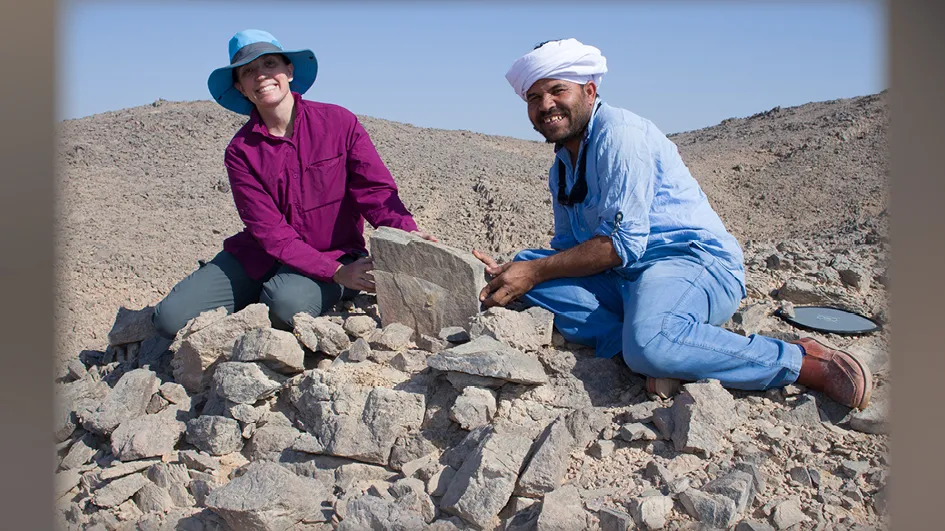Alan Llavore | Office of Strategic Communication | (909) 537-5007 | allavore@csusb.edu

Kate Liszka, The Benson and Pamela Harer Fellow in Egyptology and professor of history at Cal State San Bernardino, has been awarded the RSM Archaeological Field Research Grant from the American Research Center in Egypt with United States Agency International Development (USAID) funding.
This international grant provides $25,000 to complete an epigraphic and translation project of Ancient Egyptian inscriptions from the Wadi el-Hudi Expedition and Dihmit South in Egypt. Liszka’s team plans to travel to Aswan, Egypt, over winter break to complete the research.
Wadi el-Hudi and Dihmit South are 4,000-year-old Ancient Egyptian amethyst mines and settlements. Ancient expeditions of over a thousand people would mine amethyst for royal jewelry. While working, they also carved hundreds of inscriptions with hieroglyphs, cursive hieroglyphs, or just figural images of people or dogs.
The Wadi el-Hudi Expedition has been recording these amazing places and thousands of artifacts for 10 years, and they have had the pleasure of discovering more than 100 new inscriptions in their original archaeological locations.
Several current and former CSUSB students have been part of the team. A few have had the opportunity to travel to Egypt as members of the archaeology team. Dozens of other CSUSB students have participated in faculty-led research projects while learning archival, design and mapping skills here at Cal State San Bernardino; they study images and drawings of the artifacts at home, creating 3D models, maps, reconstructions of the ancient world, and databases for the team.
The research this coming winter buoyed by the newly awarded grant will support the translation, study and drawing of 10 important inscriptions for understanding the history and mining processes of ancient Egypt. This team will also make 3D models and 3D drawings of the inscriptions to include them as assets within a larger 3D landscape of the entire archaeological site.
Virtually, people everywhere will soon be able to explore the larger archaeological landscape, see how the CSUSB team found these items, access the drawings and translations of each object, and learn about the past. Of course, the grant team will also complete standard, academic publications of each of these newly found inscriptions, too.
Liszka’s research in Egypt helps to support the CSUSB Department of History and the Certificate in Egyptology program. This is a key part of the larger expansion of the study of ancient Egypt at CSUSB, which also includes an excellent collection of Egyptology books at the university’s John M. Pfau Library and a unique collection of Ancient Egyptian artifacts housed at the Robert and Frances Fullerton Museum of Art.